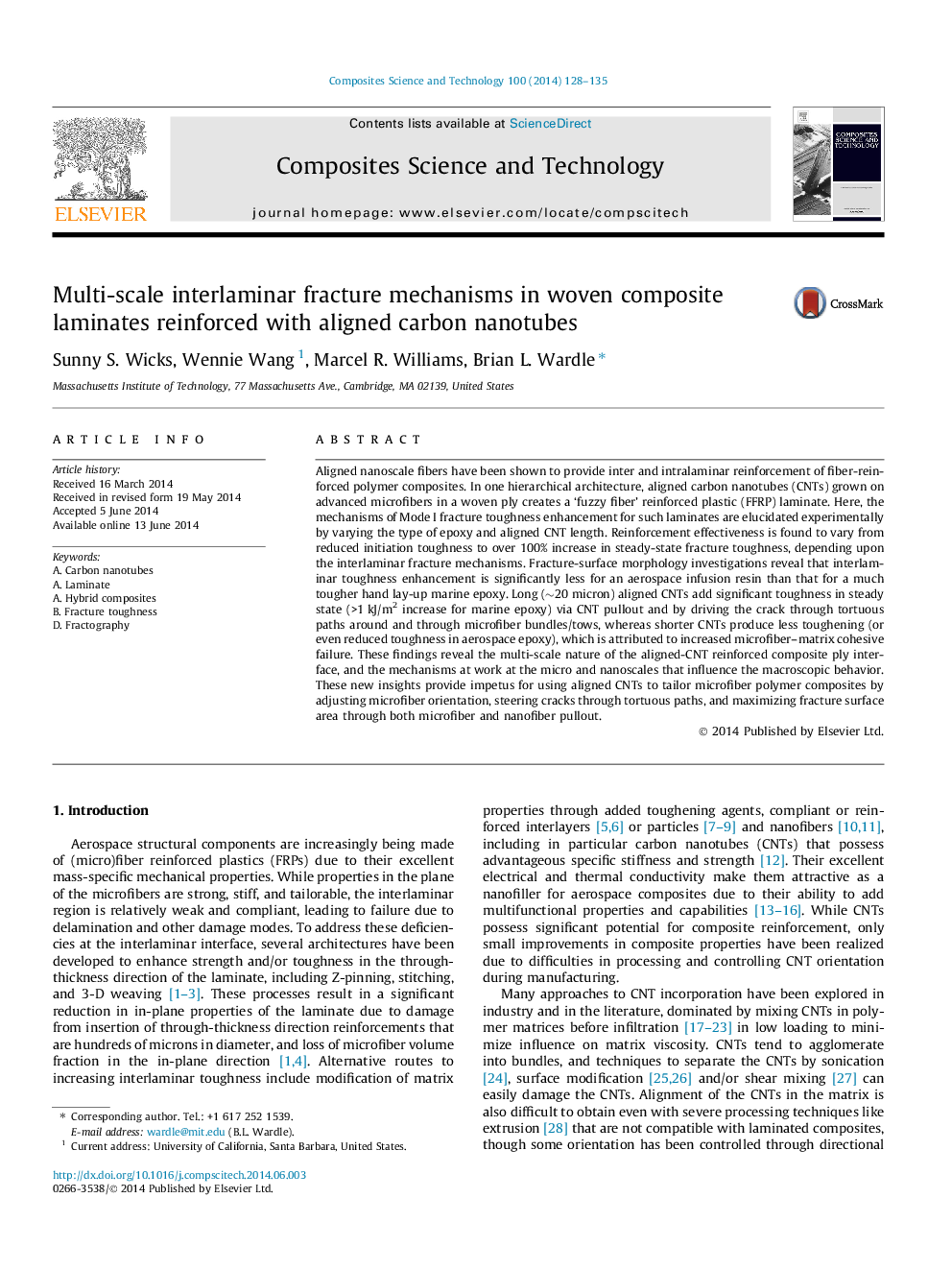| Article ID | Journal | Published Year | Pages | File Type |
|---|---|---|---|---|
| 7215765 | Composites Science and Technology | 2014 | 8 Pages |
Abstract
Aligned nanoscale fibers have been shown to provide inter and intralaminar reinforcement of fiber-reinforced polymer composites. In one hierarchical architecture, aligned carbon nanotubes (CNTs) grown on advanced microfibers in a woven ply creates a 'fuzzy fiber' reinforced plastic (FFRP) laminate. Here, the mechanisms of Mode I fracture toughness enhancement for such laminates are elucidated experimentally by varying the type of epoxy and aligned CNT length. Reinforcement effectiveness is found to vary from reduced initiation toughness to over 100% increase in steady-state fracture toughness, depending upon the interlaminar fracture mechanisms. Fracture-surface morphology investigations reveal that interlaminar toughness enhancement is significantly less for an aerospace infusion resin than that for a much tougher hand lay-up marine epoxy. Long (â¼20 micron) aligned CNTs add significant toughness in steady state (>1Â kJ/m2 increase for marine epoxy) via CNT pullout and by driving the crack through tortuous paths around and through microfiber bundles/tows, whereas shorter CNTs produce less toughening (or even reduced toughness in aerospace epoxy), which is attributed to increased microfiber-matrix cohesive failure. These findings reveal the multi-scale nature of the aligned-CNT reinforced composite ply interface, and the mechanisms at work at the micro and nanoscales that influence the macroscopic behavior. These new insights provide impetus for using aligned CNTs to tailor microfiber polymer composites by adjusting microfiber orientation, steering cracks through tortuous paths, and maximizing fracture surface area through both microfiber and nanofiber pullout.
Related Topics
Physical Sciences and Engineering
Engineering
Engineering (General)
Authors
Sunny S. Wicks, Wennie Wang, Marcel R. Williams, Brian L. Wardle,
